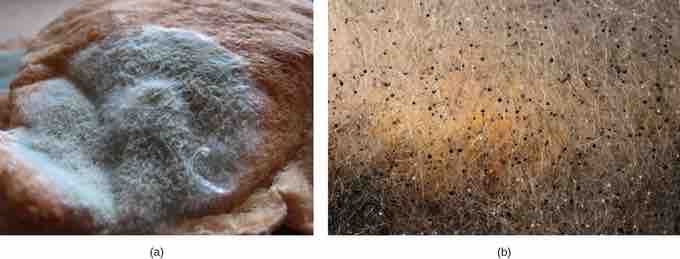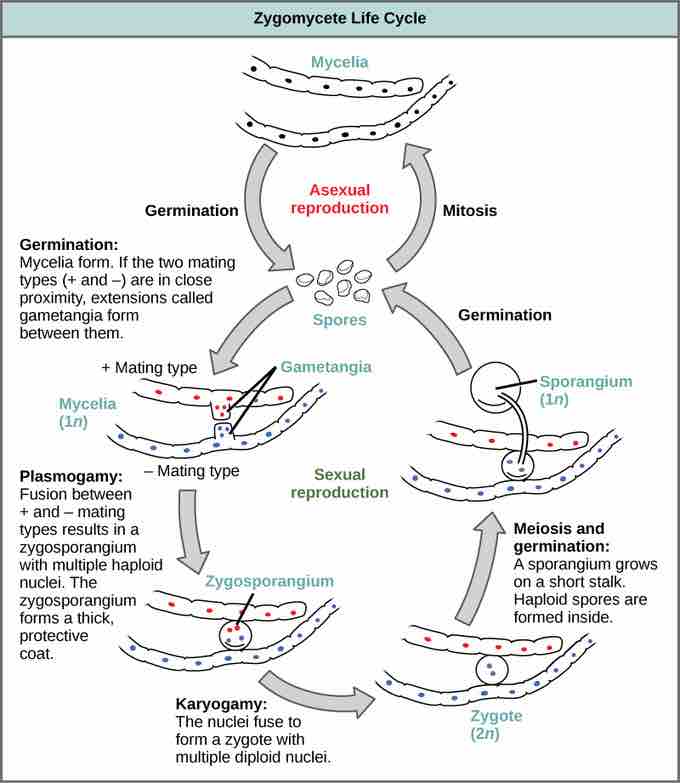Zygomycota: The Conjugated Fungi
The zygomycetes are a relatively small group in the fungi kingdom and belong to the Phylum Zygomycota. They include the familiar bread mold, Rhizopus stolonifer, which rapidly propagates on the surfaces of breads, fruits, and vegetables. They are mostly terrestrial in habitat, living in soil or on plants and animals. Most species are saprobes meaning they live off decaying organic material. Some are parasites of plants, insects, and small animals, while others form symbiotic relationships with plants. Zygomycetes play a considerable commercial role. The metabolic products of other species of Rhizopus are intermediates in the synthesis of semi-synthetic steroid hormones.
Zygomycetes have a thallus of coenocytic hyphae in which the nuclei are haploid when the organism is in the vegetative stage. The fungi usually reproduce asexually by producing sporangiospores . The black tips of bread mold, Rhizopus stolonifer, are the swollen sporangia packed with black spores . When spores land on a suitable substrate, they germinate and produce a new mycelium.

Sporangia of bread mold
Sporangia grow at the end of stalks, which appear as (a) white fuzz seen on this bread mold, Rhizopus stolonifer. The (b) tips of bread mold are the spore-containing sporangia.

Zygomycete life cycle
Zygomycetes have asexual and sexual life cycles. In the sexual life cycle, plus and minus mating types conjugate to form a zygosporangium.
Sexual reproduction starts when conditions become unfavorable. Two opposing mating strains (type + and type –) must be in close proximity for gametangia (singular: gametangium) from the hyphae to be produced and fuse, leading to karyogamy . The developing diploid zygospores have thick coats that protect them from desiccation and other hazards. They may remain dormant until environmental conditions become favorable. When the zygospore germinates, it undergoes meiosis and produces haploid spores, which will, in turn, grow into a new organism. This form of sexual reproduction in fungi is called conjugation (although it differs markedly from conjugation in bacteria and protists), giving rise to the name "conjugated fungi".